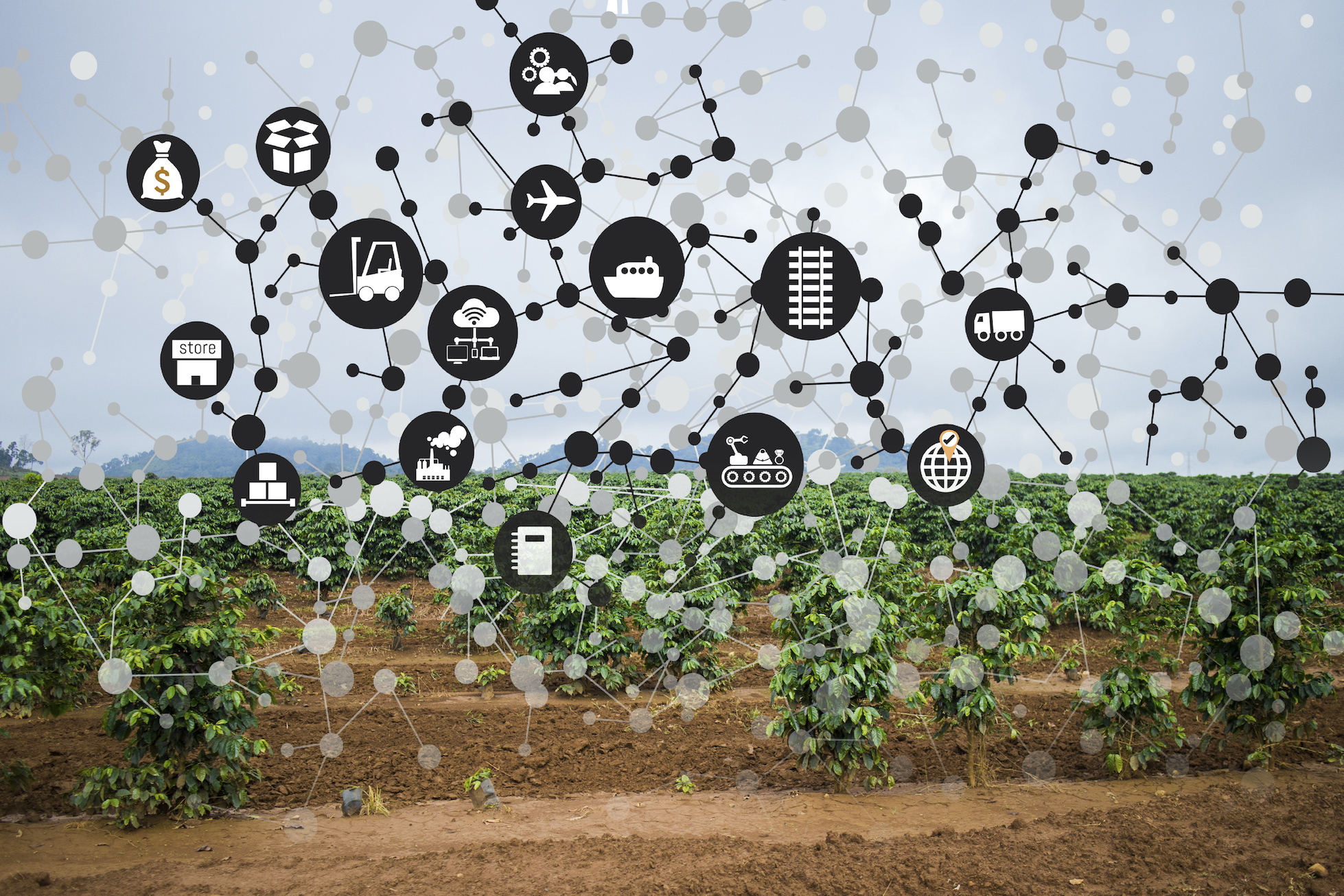在大流行后粮食系统的这一设想看起来很像一个微型电网

This article was adapted from the GreenBiz Food Weekly newsletter.在此注册收到你自己的免费订阅。
The immediate impacts of the coronavirus pandemic are brutally clear: Exhausted medics, empty supermarket shelves and lines at food banks. It’s also clear that the pandemic will reshape societies and economies in the longer term. What we struggle with, as we do whenever we try to forecast the future, is to know how to use today’s impacts to predict what that reshaping will look like.
A couple of macro points first. We should take a wide-angle view of what’s to come. As the纽约客注意,以前的大流行“引发了骚乱和推进公共卫生创新,预示革命和重新绘制地图。”但是,这并不一定意味着完全的想象不同的未来。许多分析师的想法立足预测,流感大流行的意志exacerbate existing trendsrather than create new ones.
So which trends should we pay attention to? I see two that are critical to food. The first is the ongoing backlash against globalization, which has led populist leaders — Trump, Bolsonaro, Putin — to back away from free-trade deals and promote inward-looking policies. The other is an awareness of the need to build more resilient systems, forced upon us in part by the knowledge that climate change will make extreme weather more frequent. Both forces likely will be accentuated by a pandemic that is restricting travel and exposing the brittleness of some supply chains.
I was mulling the impact of these forces when an email arrived from Stephan Dolezalek, an executive director at the Wheatsheaf Group, a $500 million venture fund with close to 30 investments in the food and ag space. Dolezalek has spent a long time looking at trends in his sector and has come to believe that we’re heading for a food system that "emulates the characteristics of a microgrid: Redundant, distributed, resilient, smaller scale and locally powered, yet connected to the larger world in ways that benefit it when safe but can be disconnected when not so."
His forecast is based in part on his experience as a VC in other industries that have been upended by similar transitions. Computers used to fill rooms. They migrated to our desks, laps and now our pockets, a transition made possible by the creation of the decentralized computing network that brought you this email. Electricity is in the middle of its own transition to a more decentralized network, as smaller local facilities — think microgrids, residential solar, batteries — start taking on some of the load previously shouldered by large power plants.If this continues for a year or longer, I think we will have permanently wired new ways of producing, sourcing, processing, distributing and consuming healthier foods.
The same thing is happening in food, Dolezalek argued. When we spoke by phone this week, his Exhibit A was the beer sector, where a multitude of small craft breweries is taking share from the big incumbents. (Beer sales fell 2 percent last year, but craft sales grew 4 percent to reachalmost 14 percent of the U.S. market.)
这不是过渡的唯一标志。据农业部美国能源部,数量farmers markets has grown by 6 percent since 2014并且靠近9000,全国Walmarts的几乎两倍。有迹象,甚至有零售巨头如全食,这使得从附近的农场广告产品的一个点。
“过去几个月,我们不得不重新思考和返工的飞行我们的食品供应链,” Dolezalek写道。“雅戈尔公司工作的农场到餐桌的模型,并采用网上订购,以及在家中分娩,看到了他们的业务爆炸。即使生命奇迹般地恢复到正常的几个月,许多企业已经changed minds and won customers who won’t go back to their old ways. If this continues for a year or longer, I think we will have permanently wired new ways of producing, sourcing, processing, distributing and consuming healthier foods that will become the new normal."
This sounds great at harvest time in Napa, less so during the snowbound Nova Scotia winter. But recall that this system is more decentralized, not totally so. Food still moves across and between countries. Technology also can help. Indoor farms reliably produce leafy greens at market rates, regardless of the temperature outside. Longer-term, cell-grown meat facilities may become hubs in a decentralized food system. (Dolezalek acknowledged that he has a horse in this race: His firm is an investor in the indoor ag company AeroFarms, where he is chairman.)
There is a lot to like in the idea of a food system that’s more resilient to shocks and provides communities with a closer link to local producers. But there’s also a big unanswered question here: Is this new system more sustainable? Would shifting to more local production reduce greenhouse gas emissions, reverse biodiversity declines and cut water use?
This question is as challenging to answer as it is important. It’s something that I will turn to in future editions of Food Weekly. For now, I’ll end part one of this forecasting exercise with my regular request to let me know what you think. Comments on Dolezalek’s ideas and forecasts of your own are welcome at[电子邮件保护].




